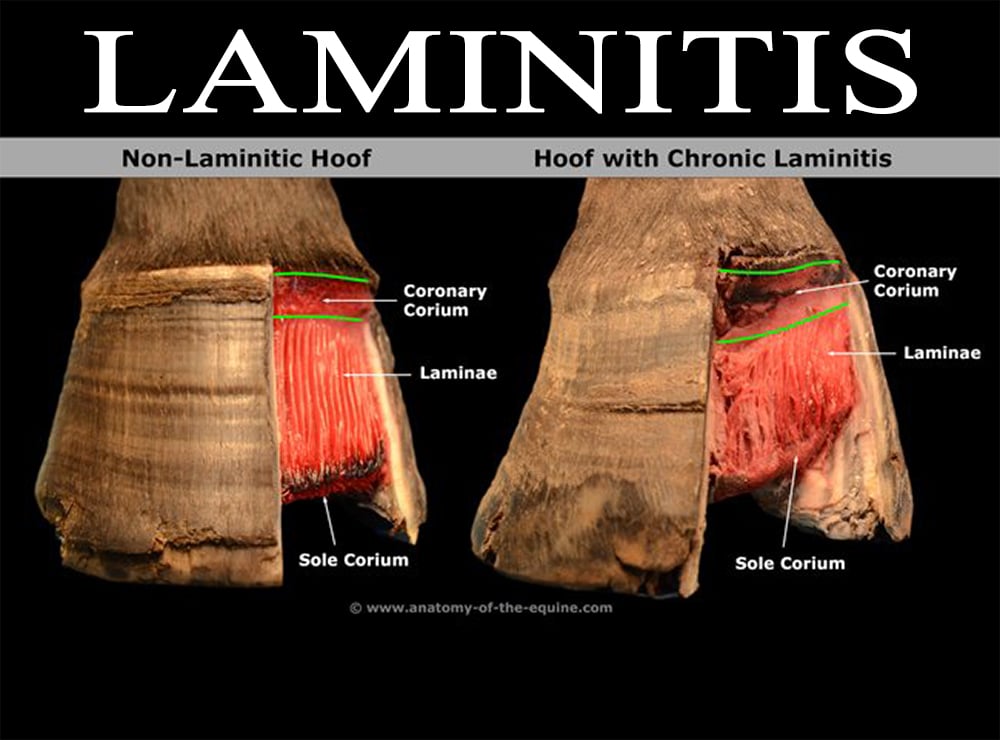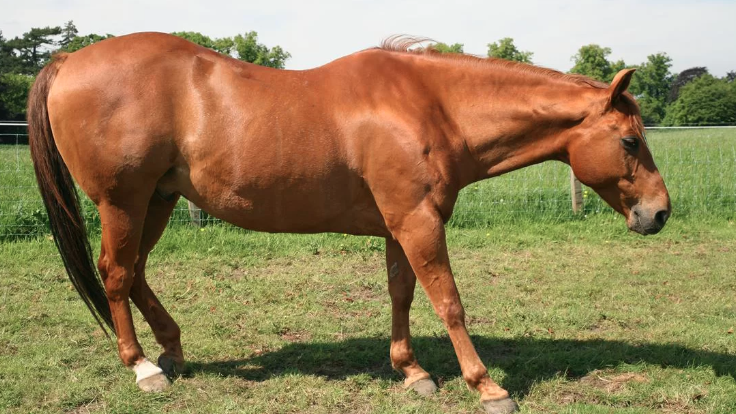
Inside the hoof are 2 types of laminae. These very sensitive finger-like protrusions of tissue interlock like your fingers if you were to clasp your hands. Since a horse bears all their massive weight on their hooves, you can imagine that if these tissues become inflamed it is excruciatingly painful.
Left untreated, this devastating hoof disease can cause extensive damage and permanent deformity, ultimately leading to euthanasia as the only humane option In severe cases.
Fortunately, if you understand the signs and symptoms, you are better equipped to do your part in saving your horse.
Any horse can develop acute laminitis caused by:
- An overload of carbohydrates
- Severe gastrointestinal illness
- Mechanical stresses
But the most common is the chronic form and is usually triggered by:
- Hormonal imbalances associated with equine metabolic syndrome (EMS)
- Pituitary pars intermedia dysfunction (PPID) – also called Cushing’s disease
- Or other disorders
In its early stages, laminitis may only show the slightest symptoms, but it can also be alarmingly obvious. If you don’t act immediately the consequences could be disastrous.
So, what are the signs? If you notice any of these, it’s imperative that you call Rocky Valley Veterinary Services at 865-566-8359.
- The founder position – leaning heavily on the back legs with the forefeet stretching forward
- Constant changes in posture – shifting weight back and forth on the front feet
- Leaning to rest, lying down, or hesitant to rise
- Sweating with fever and shallow breathing
- Hooves that are warm to the touch
- A fast and strong pulse on the back of the pastern, just above or below the fetlock
- Other visible signs of pain

After you have contacted us, immediately put the horse’s feet into ice. Don’t wait to start this important step. Ice treatment has been proven to stop the progression of laminitis, but of course, does not cure it. You will need to obtain a tub deep enough to submerge the legs up to the middle of the cannon bone (similar to the area where humans get shin splints). Fill the tub with cold water and ice and continue replenishing until we arrive. This therapy can greatly reduce the severity of laminitis, even if you start it after signs of foot pain appear.
While waiting for our arrival, go ahead and take the horse’s temperature. Laminitis is known to follow along with other illnesses, so be sure to write this down and let us know when we get there.
**IMPORTANT**
DO NOT walk your horse if you suspect he has laminitis. This greatly increases the amount of stress on the laminae with each step taken. In fact, wherever the horse is when you find him and suspect laminitis, leave him exactly where he is. Even walking a short distance can cause further damage. If you absolutely must move the horse, try to bring a trailer to him and if he wants to lie down in the trailer, let him. If there is no option but to walk him, although strongly discouraged, take the shortest route possible, preferably over soft ground.
While you’re waiting for us to arrive or shortly after we leave, you will need to prepare a stall with very deep bedding (at least 8 inches), or a pen with sand or another very soft footing. The goal here is to support the coffin bone by allowing the material to pack up inside the hoof to help prevent or reduce rotation. This will also help to alleviate the pain.
Laminitis is not a condition that you should use the “wait and see” approach. If you suspect any of these signs, call us immediately at 865-566-8359. For our established clients we have 24/7 emergency care. If you’re not an established client, please consider our compassionate, professional staff to provide exceptional care for your horse.


Leave a Reply